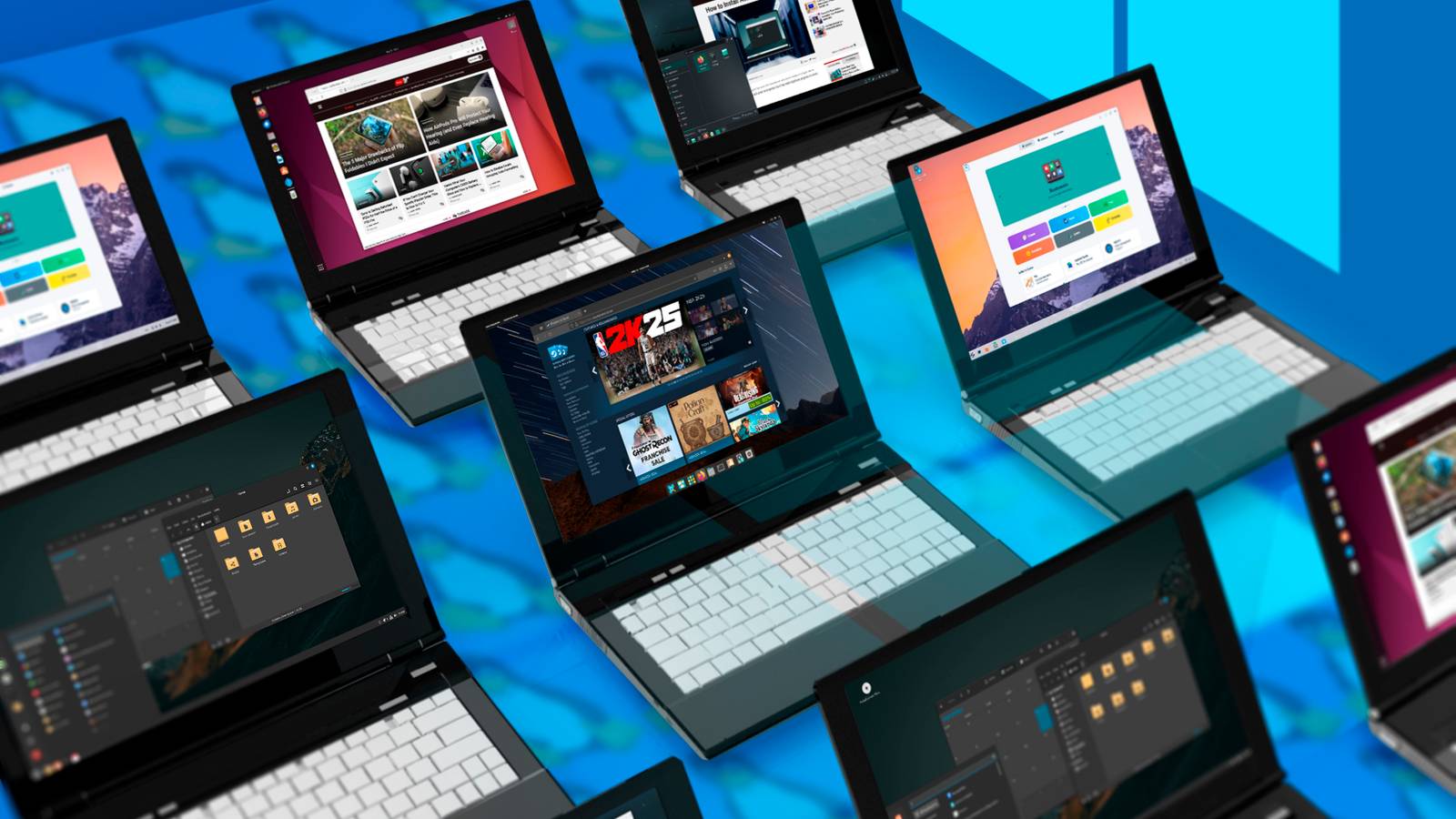Whether you like it or not, Windows 10 is going away, and it’s time to pick a new OS. When Windows 10 support ends, I’m leaving Windows for good. But the only viable option is Linux, and there are dozens of distros to choose from.
Plenty of these Linux distros are easy to use, even if you’ve never used Linux before. However, Linux as an OS does give you a lot more control over every aspect of your computer. So if you’re jumping ship to Linux, don’t switch to any of these distros until you know what you’re doing.
The Linux final boss
Linux From Scratch (LFS) is by far one of the most difficult Linux distributions you’ll ever use. In fact, it’s technically not even a finished distro—it’s more like a tutorial that walks you through building your own Linux system entirely from source code. It’s called Linux From Scratch for a reason.
Since you’ll be compiling your own OS and pretty much all the software you’ll be using, LFS also demands some hefty resource requirements. The LFS FAQ suggests using at least a quad-core CPU and 8 GB of RAM, but in reality, you should be using a much more powerful CPU and more RAM if you don’t want to wait for days for software to finish compiling.
You’ll need experience with Linux and an understanding of Unix system administration just to get the OS running. The prerequisite page of the LFS documentation starts with the sentence “Building an LFS system is not a simple task.” That should give you a hint at what a challenge running LFS can be.
Where patience goes to die
Gentoo Linux operates on the philosophy of compiling every piece of software you use from its source code, ensuring it’s optimized specifically for your hardware. While that may sound exciting for your PC’s performance, it also means waiting hours, if not days, watching all your software compile and hoping there are no errors.
Surprisingly, Gentoo doesn’t have high hardware requirements. You can run it on just about any PC, as long as you have the patience to wait hours for every software you’re going to install. Gentoo’s difficulties don’t lie in outrageous hardware requirements. It’s the mental gymnastics you’ll have to do in order to get just about anything running.
Figure it out yourself
Arch Linux takes an entirely different approach to being difficult. You don’t have to sit through hours of software compilation, but Arch assumes you already know what you’re doing. If you’re switching from Windows and using Linux for the first time, you’re going to have a tough time using Arch. It’s like being thrown into the deep end of a pool, except the pool is filled with command-line interfaces and the lifeguard is a wiki page that assumes you already know how to swim.
In terms of hardware, Arch is one of the most lightweight Linux distros around. So you can run it on most PCs. However, since there’s no graphical installer, you’ll be diving headfirst into terminal commands from the beginning.
The installation guide also assumes you’re familiar with concepts like EFI boot partitions, initramfs, and systemd services. For someone coming from Windows, this makes the installation itself an overwhelming experience.
It also has a rolling release model, which ensures your system is constantly updated. That said, this model also runs the risk of randomly breaking system components, including drivers. Fixing these can be a big headache.
The Spartan warrior of OSes
OpenBSD isn’t technically Linux—it’s a completely different Unix-like OS that makes Arch look user-friendly. OpenBSD is designed with security as the top priority. This sounds great until you realize that the developers seem to consider user experience a security vulnerability as well.
Installation is, of course, text-based and assumes you’re intimately familiar with Unix concepts. The OpenBSD manual is legendary as well. To the point that it opens with a search bar on an empty page. It took me 10 minutes to figure out how to use the manual, and I have been using Linux almost as long as Windows.
To make matters worse, OpenBSD uses different tools than Linux. This means even something as basic as the ps commands works differently, tar has different options, and even basic utilities behave in subtly different ways.
There’s also no equivalent to apt-get upgrade. To update your system, you need to regularly recompile the kernel and userland from the source code. On older hardware, this process can take hours if not days.
Fast, fresh, and extremely fragile
Debian Sid is the development branch of the Debian distro where new packages land before being tested for the next stable release. The distro is named after the Toy Story character Sid, the kid next door who breaks his toys and makes nasty creatures out of them.
Surprisingly, Debian Sid isn’t as unstable as its name suggests. However, when it breaks, it really breaks. Packages become uninstallable, entire desktop environments disappear overnight, or an entire part of your OS might stop functioning. Every day you use this distro is a gamble. The day you lose, be prepared for a time-consuming repair session.
Windows users are used to relatively predictable update cycles and GUI troubleshooters that solve their problems for them. On Debian Sid, when something breaks, the general assumption is that you already know how to fix it.
It also changes almost every day. In fact, there are no images available to install Sid as any installation media will likely be outdated by the time you’re done installing it. It may not be a difficult distro to use, but it sure is difficult to live with.
These distros are the OS equivalent of advanced calculus. Extremely powerful and enlightening, but not something you’d want in your first math lesson. They’re best considered hobbies as much as OSes, and they demand the time investment that a complex hobby requires.
Using them will leave you questioning why you ever left the comfortable point-and-click world of Windows, and that it’s finally time to upgrade to Windows 11. You could try to stick with Windows 10 until 2030, but a much better alternative would be to switch to a beginner-friendly Linux distro such as Linux Mint or AnduinOS.














